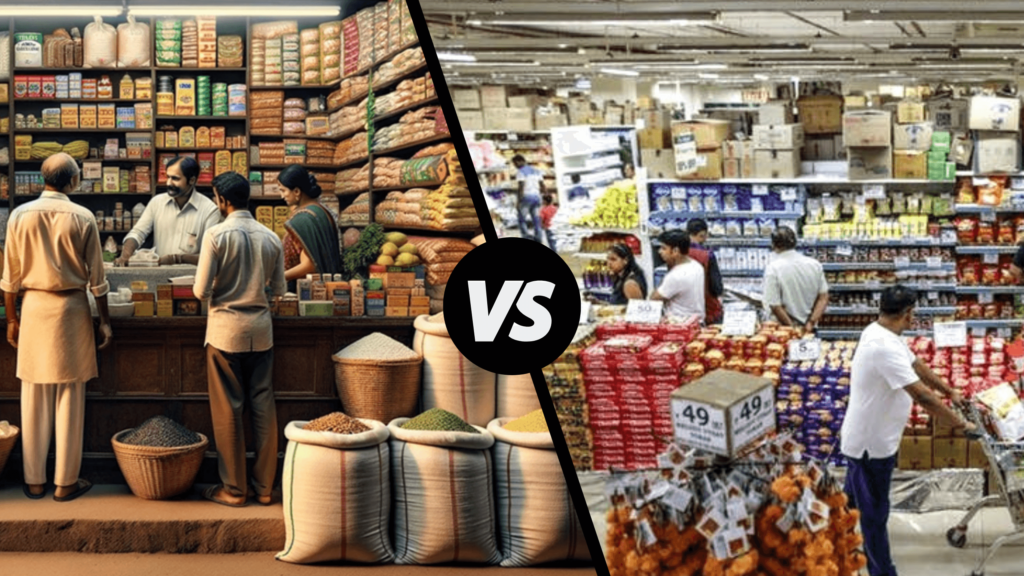
Be it large supermarkets, mini-marts, or Kirana stores, planning a great product assortment and merchandising assortment is very important. Let us take you through the meaning of product assortment, its fundamentals, and the critical role it plays in ensuring the growth and profitability of both supermarkets and Kirana stores.
What is Product Assortment?
Product assortment refers to the well-chosen selection of products a supermarket or Kirana store offers to its defined customers. This selection includes choosing your products from a wide range of elements, such as product categories, subcategories, products, brands, sizes, and price ranges. This carefully considered product selection, which reflects the store’s personality, target market, and market trends.
Benefits of Choosing the Right Products for Your Store:
Crafting a well-defined product assortment has a lot of advantages:
- Enhanced Customer Experience:
An assortment curated as per customer preferences results in increased satisfaction and customer loyalty.
- Increased Sales:
Sales increase when you provide goods that your customers are interested in buying. This also ensures repetitive purchases and the establishment of customer loyalty.
- Competitive Differentiation:
A carefully crafted product assortment sets your store apart from your competitors and transforms it into a desirable location for shopping for customers.
- Effective Inventory Management:
Thoughtful assortment planning helps in optimizing inventory, reducing waste, and efficiently managing shelf space. Merchandising your assortment is also important and becomes easy if you manage your inventory properly
Steps to Choose the Correct Products for Your Store:
The process of choosing the correct product assortment demands sufficient information. Here’s a detailed guide to creating a customer-specific products assortment for your store:
A. Understanding the Demographics:
- Demographic Analysis:
Study the demographic profile of the locality where your store is located. Aspects such as age, gender, income level, and occupation will guide your product selection.
- Population Diversity:
Factor in diversity in terms of religion, caste, and cultural inclination. This influences the demand for specific products that go along with diverse preferences. Eg. Maharashtrians really like to eat Ambemohar rice and hence you have to keep it in your store if your area has a lot of Maharashtrians
- Spending Capacity:
Learn about the spending capacity of your target audience. Product planning is dependent on the spending capacity of your customer and you should be able to cater to both budget-conscious and premium-seeking customers.
- Family or Bachelors?:
Figure out the type of households within your area. The products used by families or bachelors products are different and have to be planned differently
B. Identifying Gaps and Opportunities:
- Competitor Analysis:
Analyze nearby stores to learn about the gaps in their product offerings. Identify opportunities for introducing products that aren’t currently available and are in demand in your locality.
- Market Trends:
Keep up with current market developments and shifting customer preferences. This can be done by studying the market position of newly launched products or introducing a specific quantity of trending products in your store.
- Seasonal Factors:
Take into account how demand changes with the seasons. Specialty goods, for example, can see increased attention during festive times.
- Seek the help of Suppliers or Distributors:
Establish good relationships with suppliers and Distributors. They can provide insights into trending products and competitive deals, facilitating informed decisions.
C. Making the right Product Assortment :
Based on the information you gather, plan your product assortment by defining items as per Categories, sub-categories, products, and brands.
- Choose the Product Categories:
Determine the larger Customer segments in your area and ensure the availability of those categories which are high in demand. Eg. The people residing in your area are majorly working-class, ready-to-eat food and Frozen Food Category should definitely be a part of your product assortment.
- Determine the Subcategories:
Identify the subcategories that would best serve the specific needs of your customers.
Eg. If your store is located in an area where there are alot of individuals from Gujarat, who eat vegetarian food, it is crucial to ensure the availability of frozen veg food in your store.
- Select the Products:
Based on the insights that you have through the study of the demographics data and your locality, choose the product that people in your area have an inclination towards. Eg. If the population of the young age group in your area is more, western snacking items such as french fries, potato shots, etc. should be added to the assortment.
- Choose the Brand:
The Brand chosen should be based on the type of customers. Eg. If the Customers residing in the area of your store are from the high-income class then products from the premium brands should be added to the product assortment.
The science of product assortment highlights its crucial role in influencing customer experiences and boosting sales in any Kirana Store or Supermarket. Keep in mind that product assortment is a powerful instrument that drives retail success by enhancing the consumer shopping experience.
If you need any help with respect to crafting the correct customer-oriented assortment to ensure the success of your Kirana Store or Supermarket you can get in touch with our Experts by calling or Messaging us at 8010224444.
You can also download the Kirana Friends application from Google Play Store by Clicking Below.





